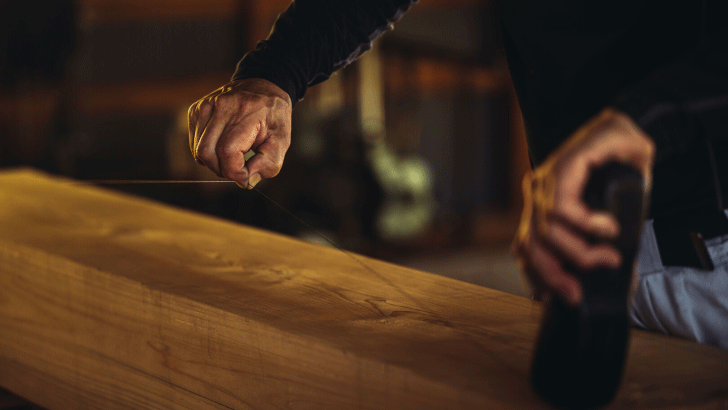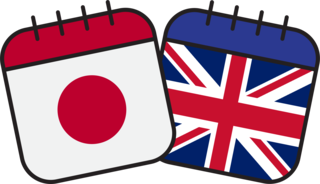
Credit: Igarashi Junya
DEMONSTRATIONS: Using the Carpenters’ Line
- 12 & 13 November 2022
-
12 November 2022, 14:30-15:30 / 17:00-18:00
13 November 2022, 13:30-14:30 / 16:00-17:00 - The Hall, Japan House London, 101-111 Kensington High Street, London, W8 5SA
- https://www.japanhouselondon.uk/whats-on/2022/demonstrations-using-the-carpenters-line/
- +44 (0)20 7932 7100
- info@japanhouselondon.uk
- Tweet
Discover the history of woodworking in Hida by attending a series of carpentry demonstrations using sumi-nawa – the carpenters’ line – a fundamental carpentry tool in Japan used for marking straight lines on wood.
The carpenters’ line, or sumi-nawa (sometimes also referred to as sumi-tsubo), is the tool that plays an essential role at the start of a carpentry project. It is used to mark the measuring lines on wood, a process called sumitsuke. Based on these lines, a carpenter then proceeds to cut into the wood using such tools as saws or hammers and chisels. The cutting process named kizami requires great accuracy and precision to ensure the wooden elements fit perfectly together. During the demonstrations, Kose Hisanori, a nationally certified carpenter from the Takayama Wood Craftsmen Society, introduces Japanese wood joinery using the sumitsuke and kizami techniques.
Each event, led by Ushimaru Takehiko from the Takayama Board of Education’s Cultural Assets Division, offers an opportunity to better understand building techniques used in wooden architecture in Japan.
These demonstrations are part of a programme of events connected with the exhibition The Carpenters’ Line: Woodworking Heritage in Hida Takayama.
About the speaker
Kose Hisanori (Takayama Wood Craftsmen Society)
Born in 1961 in Takayama, Kose Hisanori is a nationally certified carpenter with many years of experience. His work has spanned a variety of projects involving wooden architecture, from refurbishing Japanese Shinto shrines and Buddhist temples to preserving the woodcraft techniques he inherited from his predecessors. He largely contributes to his craft by instructing younger artisans at the Takayama Wood Craftsmen Society while engaging in the development of the wider woodcraft community.
Ushimaru Takehiko (Takayama Board of Education’s Cultural Assets Division)
Born in 1972 in Takayama, Ushimaru Takehiko graduated from Gifu University’s Faculty of Education and completed his masters in East Asian Archaeology at Senshu University’s Graduate School of the Humanities.
Throughout his career at the Takayama City Hall, he has been involved in a variety of fields, such as excavated cultural assets, building constructions, nationally recognized districts of preserved historical buildings, folk culture assets, registered Japanese heritage sites, and in general, cultural asset administration.
In 2006, he was dispatched to Gifu Museum for three years as a curator specializing in the Hida region. In 2015, he worked for two years in Japan’s Agency of Cultural Affairs, and was involved in preservation work relating to historical structures and nationally registered heritage sites. Currently, he is the Director of the Takayama Board of Education’s Cultural Assets Division, the Hida-Takayama Town Museum, and the Takayama Fudoki-no-Oka Education Center.
This event has been made possible with the support of Takayama City and Gifu Prefecture.
Booking Essential | Admission Free
